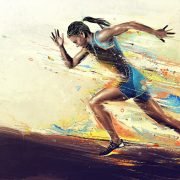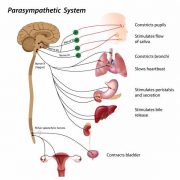The hip and the knee
When interested in the human body, it is critical to make links!
A recent study did just that as it looked at patello-femoral pain in runners and associated it with a lack of mobility at the hip.
Individuals were studied for 6 weeks as they were asked to perform muscular strengthening exercises. Some of these individuals had pain and others didn’t.
Either we chose for this group to strengthen muscles of the hip or of theknee.
The individuals that suffered from knee pain that completed the program gained in adduction, external rotation and internal rotation of the hip.
The individuals suffering from knee pain that did not complete the program had less impressive gains than the ones who completed it.
What’s fascinating about this is that, whether these individuals used a strengthening program or not, it is the ones with a stiffer hip joint that hadthe most knee pain.
When one considers that a lack of hip mobility can be associated to a static imbalance of the pelvis, why would we not calibrate the pelvis to allow for optimal performance?




